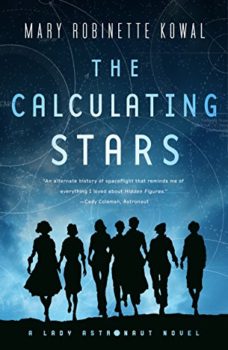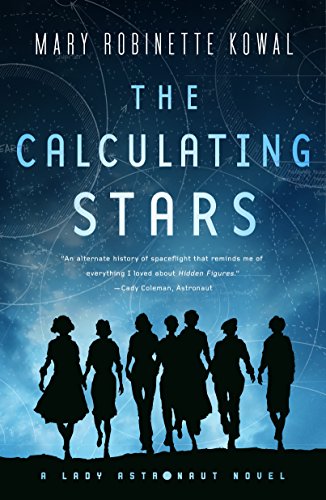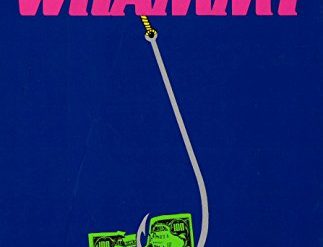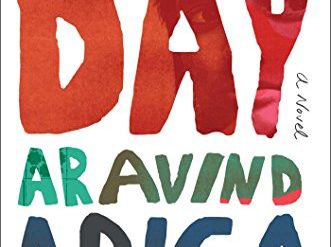
Reading as many books as I do, I find it’s increasingly difficult for a book to fully capture my attention. Three to five books per week for several years now will do that to you. So when I come across one that’s truly difficult to put down, that’s worthy of note. And the first entry in Mary Robinette Kowal‘s Lady Astronaut series was engrossing to the point that I had to tear myself away to eat or sleep. The Calculating Stars is a tour de force of historical fiction. It’s also an example of just how good hard science fiction can be.
Estimated reading time: 5 minutes
An alternate history of the United States—and the planet
The Calculating Stars introduces Dr. Elma Wexler York, a mathematical genius with doctorates in physics and math from Stanford University. Elma had gone to high school at age eleven and to Stanford at fourteen. She’s the anxiety-ridden daughter of a Jewish Army general who works as a computer at the National Advisory Committee for Aeronautics, or NACA. (In those days, “computers” were people, not machines, and most of them were women. Using paper, pencil, and adding machines, they wrote the equations for the ballistics calculations used in artillery and, later, in missiles and rockets.)
And, yes, you read that right. It’s NACA, not NASA. Because the novel is set in the 1950s in an alternate history of the United States—and the planet. Tom Dewey had defeated Harry Truman in 1948. He has taken advantage of Wernher von Braun and the other former Nazi rocket engineers whisked away to the US. So, Dewey has jump-started the space program a decade before John F. Kennedy did so in reality. And Elma’s husband, Nathaniel, is the lead engineer in the rocketry program.
The Calculating Stars (Lady Astronaut #1) by Mary Robinette Kowal (2018) 432 pages ★★★★★
Winner of the 2019 Nebula Award for Best Novel and the 2019 Hugo Award for Best Novel
This is good hard science fiction, and the excitement starts early
The excitement starts early in The Calculating Stars when a meteorite smashes into the ocean off the mid-Atlantic coast and takes out most of the Eastern Seaboard of the United States. Nathaniel presses Elma into service to calculate the size and weight of the meteorite to help him prove to the Army that the Russians weren’t behind the tragedy. And in the process of running those calculations, she discovers that the explosive impact of the meteorite represents an extinction event. To assure its survival long-term, humanity must build colonies on other planets. And eventually the US government, and finally most of the rest of the world, sets out to do just that.
Elma will, of course, become the Lady Astronaut, and she will eventually get to the moon. But the tale of how all that comes to be is fascinating.
Revealing the virulent sexism and racism of the 1950s
It’s impossible to read The Calculating Stars without gaining a visceral understanding of the virulent sexism and racism that dominated society in the 1950s. Elma’s struggle throughout the novel to gain respect and, ultimately, a place in the astronaut program is a powerful illustration of the reality lived by so many women then (including my mother with her Phi Beta Kappa key). And the African-American characters who play large roles in the story are representative of the highly educated and accomplished men and women who were forced to take subordinate roles simply because of the color of their skin. So, this book is not just a powerful example of good hard science fiction. It’s also revisionist historical fiction of a high order.
Don’t skip the Acknowledgments and the Historical Note
Chances are, you typically skip the acknowledgments and any other notes from an author. But don’t do that with The Calculating Stars. There, you’ll learn how little author Mary Robinette Kowal departed from the historical reality and how accurate is all the jargon she throws around so freely in the book. In writing this story, she had the help of two Air Force pilots, including her father-in-law, a Vietnam-era fighter pilot and test pilot. And two real-life astronauts and a rocket scientist lent a hand, as well.
Several historical figures surface in the novel: Mr. Wizard (Don Herbert), Maggie Gee (a WWII WASP pilot whom I knew personally), and others such as Anne Morrow Lindbergh and President Dwight Eisenhower play cameo roles.
Each chapter in the book is prefaced with an excerpt from a newspaper story. In the Historical Note, you’ll learn that “most of the headlines and articles in this novel are real and are taken from The New York Times.” Kowal took very few liberties with history other than the election of Thomas Dewey, the time-shift in the space program, and, of course, the meteorite.
About the author
Mary Robinette Kowal has written eleven science fiction novels and a number of shorter works. The Calculating Stars is the first of four books to date in the Lady Astronaut of Mars series. She is also a puppeteer and a voice actor. Kowal lives in Raleigh, North Carolina.
For related reading
I’ve also reviewed the second and third books in this series:
- The Fated Sky (An astonishingly good science fiction novel about the first manned mission to Mars)
- The Relentless Moon (The third Lady Astronaut novel doesn’t live up to the promise of the first two)
You’ll find this book on The 40 best books of the decade from 2010-19. And I’ve included Mary Robinette Kowal on my list of Ten new science fiction authors worth reading now.
This is one of the 10 best alternate history novels and Good books about space travel. And you’ll find this book on my list of The decade’s top 10 historical novels, mysteries & thrillers, and science fiction.
For more good reading, check out:
- These novels won both Hugo and Nebula Awards
- The ultimate guide to the all-time best science fiction novels
- 10 top science fiction novels
- The top 10 dystopian novels
- Ten new science fiction authors worth reading now
You might also check out Top 10 great popular novels.
And you can always find my most popular reviews, and the most recent ones, on the Home Page.



























